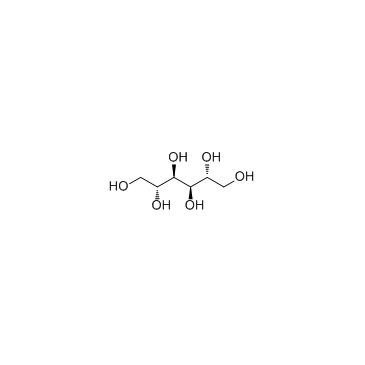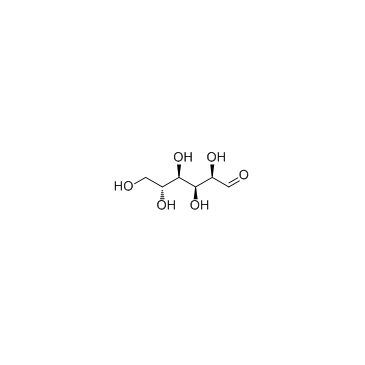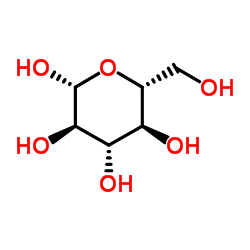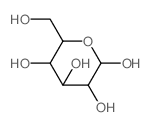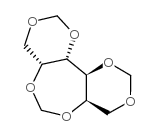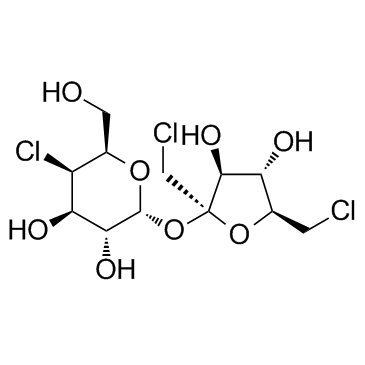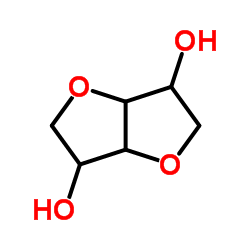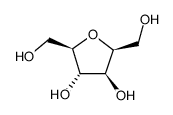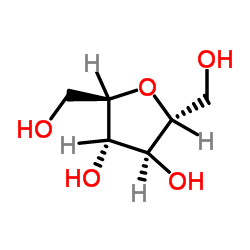69-65-8
| Name | D-mannitol |
|---|---|
| Synonyms |
Mannit p
MFCD00064287 Cytosine API 4-aminopyrimidin-2-one D-Mannitol EINECS 200-711-8 (2R,3R,4R,5R)-hexane-1,2,3,4,5,6-hexol Mannitol Cordycepate (2R,3R,4R,5R)-Hexan-1,2,3,4,5,6-hexol Cytosine (100 mg) [3H]-Cytosine Osmitrol manicol [3H]-D-(-)-Mannitol D-Mannitol (JP15) Cyt [14C]-D-(-)-Mannitol Mannitol (USP) Maniton S Mushroom sugar (2R,3R,4R,5R)-1,2,3,4,5,6-Hexanehexol Osmitrol (TN) Cytosin Cytosinimine |
| Description | D-Mannitol is an osmotic diuretic agent and a weak renal vasodilator.Target: OthersD(-)Mannitol is a sugar alcohol that can be used as an inert osmotic control substance. The uptake and phosphorylation of d-mannitol is catalyzed by the mannitol-specific phosphoenolpyruvate-dependent phosphotransferase systems (PTS). Mannitol can interact with neutrophils and monocytes. Experiments have shown that it is able to decrease neutrophil apoptosis in vitro. The compound has been used in studies as a stimulator of cecal microbial growth and cellulolytic activity in rabbits. It has been observed that mannitol can lower the fat digestibility and body fat accumulation in both normal and cecectomized rats, as well as upregulate monocyte HLA-DR, monocyte and neutrophil CD11b. Studies show that the mannitol operon is repressed by the transcription factor, mannitol operon repressor (MtlR) in Escherichia coli [1-3]. |
|---|---|
| Related Catalog | |
| Target |
Human Endogenous Metabolite |
| References |
| Density | 1.6±0.1 g/cm3 |
|---|---|
| Boiling Point | 494.9±0.0 °C at 760 mmHg |
| Melting Point | 167-170ºC |
| Molecular Formula | C6H14O6 |
| Molecular Weight | 182.172 |
| Flash Point | 292.5±23.3 °C |
| Exact Mass | 182.079041 |
| PSA | 121.38000 |
| LogP | -4.67 |
| Vapour Pressure | 0.0±2.8 mmHg at 25°C |
| Index of Refraction | 1.597 |
CHEMICAL IDENTIFICATION
HEALTH HAZARD DATAACUTE TOXICITY DATA
MUTATION DATA
|
| Personal Protective Equipment | Eyeshields;Gloves;type N95 (US);type P1 (EN143) respirator filter |
|---|---|
| Hazard Codes | Xi |
| Risk Phrases | R36/37/38 |
| Safety Phrases | S24/25 |
| RIDADR | NONH for all modes of transport |
| WGK Germany | 2 |
| RTECS | OP2060000 |
| HS Code | 2905430000 |
| Precursor 9 | |
|---|---|
| DownStream 10 | |
| HS Code | 2905430000 |
|---|---|
| Summary | HS:2905430000 (2r,3r,4r,5r)-hexane-1,2,3,4,5,6-hexaol VAT:17.0% Tax rebate rate:9.0% Supervision conditions:AB MFN tariff:8.0% General tariff:30.0% |


